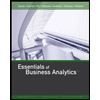
Concept explainers
a)
Lead Time: Lead time is the time consumed for the creation of a product. It refers to the time period between the time the order is placed and the product is completed. Lesser lead time creates a more competitive edge for the company.
Lead Time = Value added time + Non-value added Time
Value: Value refers to the additional element provided in the product which caters to the need of the customer and for which the customer is willing to pay.
Value added activities: The value added activities are the activities which add to the value of a product.
Non-value added activities: The non value added activities are the activities which a customer may think unnecessary and tend to reduce the value of a product.
To Calculate: The time M reached home after visiting the doctor.
b)
To Calculate: The total non-value added time spent by M.
c)
To Calculate: The value added ratio (rounded to one place).
d)
To Explain: The reasons the doctors requiring the long wait of the patients.
Want to see the full answer?
Check out a sample textbook solution
Chapter 26 Solutions
Bundle: Financial & Managerial Accounting, Loose-leaf Version, 14th + Working Papers For Warren/reeve/duchac's Corporate Financial Accounting, 14th + ... Financial & Managerial Accounting,
- Westwood Components incurs $18 in variable costs and $6 in allocated fixed costs to produce a product that sells for $32 per unit. A customer in Mexico offers to purchase 2,000 units at $21 each. Westwood Components has excess capacity and can handle the additional production. What effect will acceptance of the offer have on net income?arrow_forwardPlease give me answer with accounting questionarrow_forwardGet correct answer with general accounting questionarrow_forward
- Please help me solve this general accounting problem with the correct financial process.arrow_forwardA machine costs $50,000 with a salvage value of $5,000 and a useful life of 5 years. Calculate the annual depreciation expense using straight-line, double-declining balance, and sum-of-years-digits methods.arrow_forwardDuring 2022, Hunter Enterprises generated revenues of $175,000. The company's expenses were as follows: cost of goods sold of $92,000, operating expenses of $32,000, and a loss on disposal of assets of $5,000. Hunter's gross profit is_.arrow_forward
- Jefferson Corp. recently reported a net income of $7,840 and depreciation of $1,230. How much was its net cash flow, assuming it had no amortization expense and sold none of its fixed assets?arrow_forwardCan you solve this general accounting problem with appropriate steps and explanations?arrow_forwardI need guidance with this financial accounting problem using the right financial principles.arrow_forward
 Managerial AccountingAccountingISBN:9781337912020Author:Carl Warren, Ph.d. Cma William B. TaylerPublisher:South-Western College Pub
Managerial AccountingAccountingISBN:9781337912020Author:Carl Warren, Ph.d. Cma William B. TaylerPublisher:South-Western College Pub Financial And Managerial AccountingAccountingISBN:9781337902663Author:WARREN, Carl S.Publisher:Cengage Learning,Business Its Legal Ethical & Global EnvironmentAccountingISBN:9781305224414Author:JENNINGSPublisher:Cengage
Financial And Managerial AccountingAccountingISBN:9781337902663Author:WARREN, Carl S.Publisher:Cengage Learning,Business Its Legal Ethical & Global EnvironmentAccountingISBN:9781305224414Author:JENNINGSPublisher:Cengage College Accounting, Chapters 1-27AccountingISBN:9781337794756Author:HEINTZ, James A.Publisher:Cengage Learning,
College Accounting, Chapters 1-27AccountingISBN:9781337794756Author:HEINTZ, James A.Publisher:Cengage Learning, Essentials of Business Analytics (MindTap Course ...StatisticsISBN:9781305627734Author:Jeffrey D. Camm, James J. Cochran, Michael J. Fry, Jeffrey W. Ohlmann, David R. AndersonPublisher:Cengage Learning
Essentials of Business Analytics (MindTap Course ...StatisticsISBN:9781305627734Author:Jeffrey D. Camm, James J. Cochran, Michael J. Fry, Jeffrey W. Ohlmann, David R. AndersonPublisher:Cengage Learning





